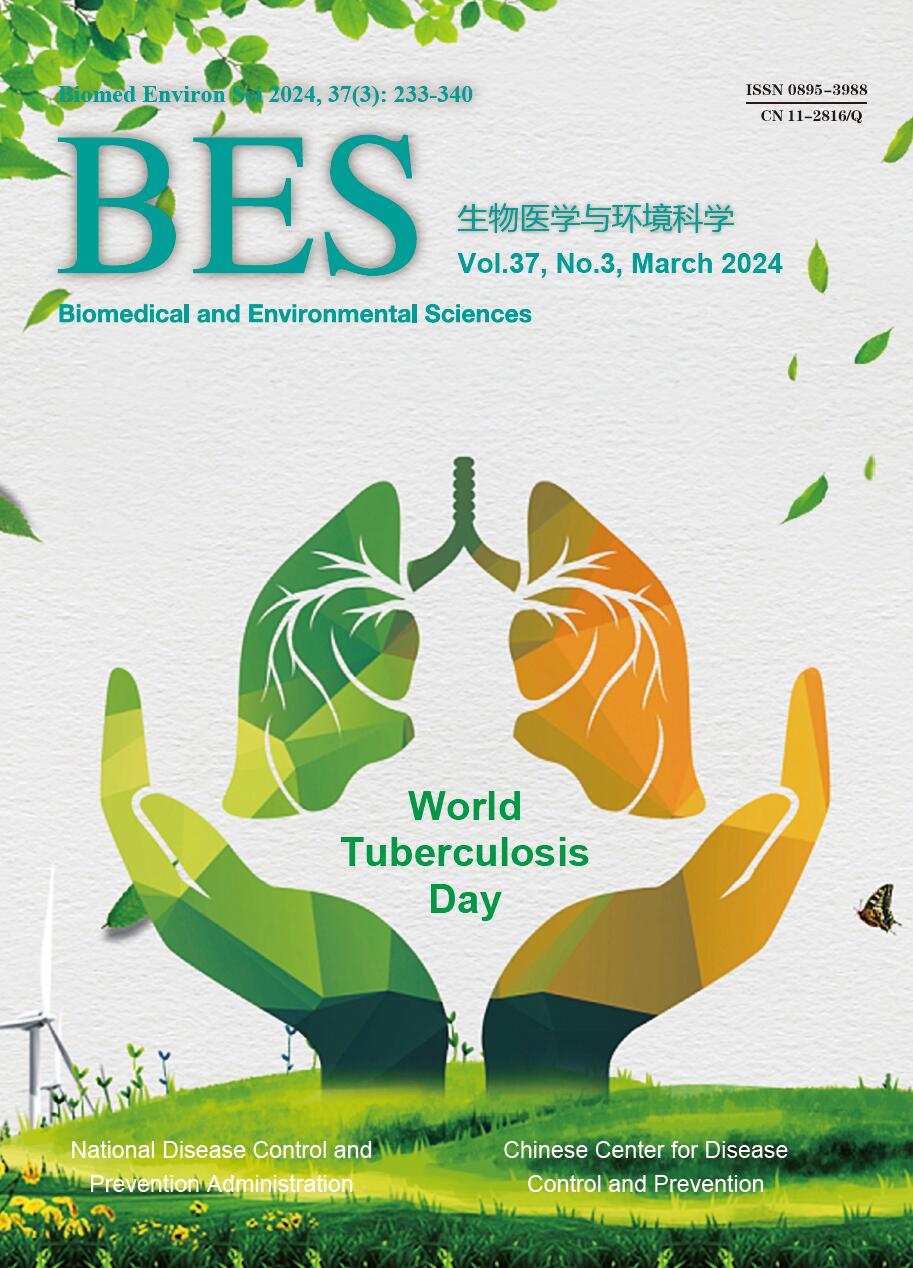2016 Vol. 29, No. 3
2016, 29(3): 163-164.
doi: 10.3967/bes2016.020
Objective To describe the undernutrition status of children under 5-year in China, and study the trend between 2002 and 2013. Methods The study was based on two national surveys. Undernutrition wasdetermined against WHOs 2006 growth standards.The prevalence in 2013 and 2002 was weighted by China sixth National Population Census (2010). The relationship between undernutrition and gender/age groups/different areas use weighted logistic regression. Results The results indicated the overall prevalence of stunting, underweight, and wasting of Chinese children under 5-year was 8.1%, 2.4%, and 1.9% in 2013, respectively. The prevalence of stunting was higher for children aged 12-47 month, while underweight was higher for children aged 48-59 month. The prevalence of undernutrition was higher in rural areas than in urban areas, especially in poor rural areas. There was a decline of stunting, underweight, and wastingbetween 2002 and 2013 among the children, with greater reduction in rural areas than in urban areas. Conclusion The prevalence of undernutrition of children under 5-year remains high in rural areas especially in poor rural areas in China. It is urgent totake action to control undernutrition in the vulnerable areas and subgroups.
Objective This study initially validates the Chines eversion of the Physical Activity Questionnaire for Older Children (PAQ-C), which has been identified as a potentially valid instrument to assess moderate-to-vigorous physical activity (MVPA) in children among diverse racial groups. Methods The psychometric properties of the PAQ-C with 742 Hong Kong Chinese children were assessed withthe scale's internal consistency, reliability, test-retest reliability, confirmatory factory analysis (CFA) in the overall sample, and multistep invariance tests across gender groups as well as convergent validity with body mass index (BMI), and an accelerometry-based MVPA. Results The Cronbach alpha coefficient (α=0.79),composite reliability value (ρ=0.81), andthe intraclass correlation coefficient(α=0.82)indicate the satisfactory reliability of the PAQ-C score.The CFA indicated data fit a single factor model, suggesting that the PAQ-C measures only one construct, on MVPA over the previous 7 days.The multiple-group CFAs suggested that the factor loadings and variances and covariances of the PAQ-C measurement model were invariant across gender groups. The PAQ-Cscore was related to accelerometry-based MVPA (r=0.33) and inversely related to BMI (r=-0.18). Conclusion This study demonstrates the reliability and validity of the PAQ-Cin Chinese children.
Objective Assessment of the bacteriumL. sphaericusas a dual-action candidate for biological control of mosquito-borne diseases and bioremediation of toxic metals. Methods Larvae of the mosquito,C. quinquefasciatus, were first evaluated for metal tolerance and then exposed to 5 ppm cadmium, chromium, arsenic, and lead in assays together with seven strains of L. sphaericus. A probit regression analysis was used to estimate the LC50 of Cd, Cr, As, and Pb toC. quinquefasciatus.An analysis of covariance and multifactorial ANOVA examined the metal biosorption and larvicidal properties of the seven strains of L. sphaericus. Results We found that L. sphaericus adsorbed the toxic metal ions and was toxic against mosquito larvae. The L. sphaericus strain Ⅲ(3)7 resulted in a larvae mortality of over 80% for all the tested metals. This strain also exhibited the capacity to adsorb 76% of arsenic, 32% of lead, 25% of chromium, and 7%of cadmium. Conclusion This study found combined metal adsorption and larval toxicity associated with three strains ofL. sphaericus[Ⅲ(3)7, OT4b.31, and CBAM5]. This suggests that a combination of these strains shows strong dual potential forbiological control of mosquitosin heavy metal-contaminated areas and remediate the heavy metal contamination as well.
Objective To investigate the impact of impoundment and active public health interventions on rodent populations and rodent-borne diseases in the Three Gorges reservoir region from 1997 to 2012. Methods Surveillance data from 1997 to 2012 were extracted from the Public Health Surveillance System of The Three Gorges established in 1997. Temporal changes in the incidences of hemorrhagic fever with renal syndrome (HFRS) and leptospirosis, rodent density, pathogen-carrying rates, and their correlations were analyzed. ResultsThe average indoor and outdoor rodent densities decreased overall from 1997 to 2012. The average densities decreased by 47.72% (from 4.38% to 2.29%) and 39.68% (from 4.41% to 2.66%), respectively, after impoundment (2003-2012) compared with before impoundment (1997-2002). The average annual incidence rates of HFRS and leptospirosis were 0.29/100,000 and 0.52/100,000, respectively, and decreased by 85.74% (from 0.68/100,000 to 0.10/100,000) and 95.73% (from 1.47/100,000 to 0.065/100,000), respectively, after impoundment compared with before impoundment. Incidences of HFRS and leptospirosis appear to be positively correlated with rodent density in the reservoir area. Conclusion This study demonstrated that rodent density and incidences of rodent-borne diseases decreased and were maintained at low levels during construction of the Three Gorges dam. Measures that reduce rodent population densities could be effective in controlling rodent-borne diseases during large-scale hydraulic engineering construction.
2016, 29(3): 224-228.
doi: 10.3967/bes2016.028
2016, 29(3): 233-238.
doi: 10.3967/bes2016.030




















 Quick Links
Quick Links